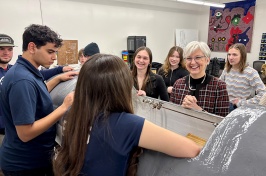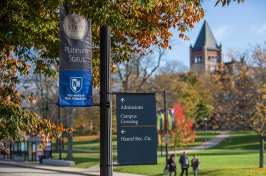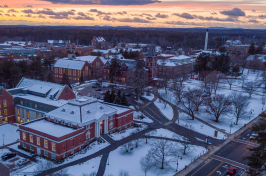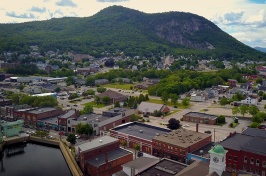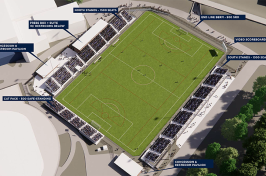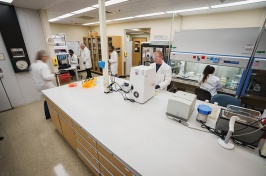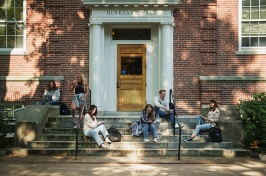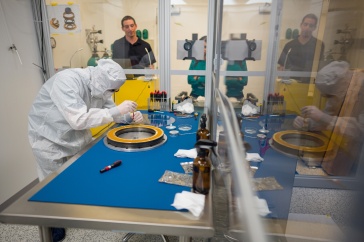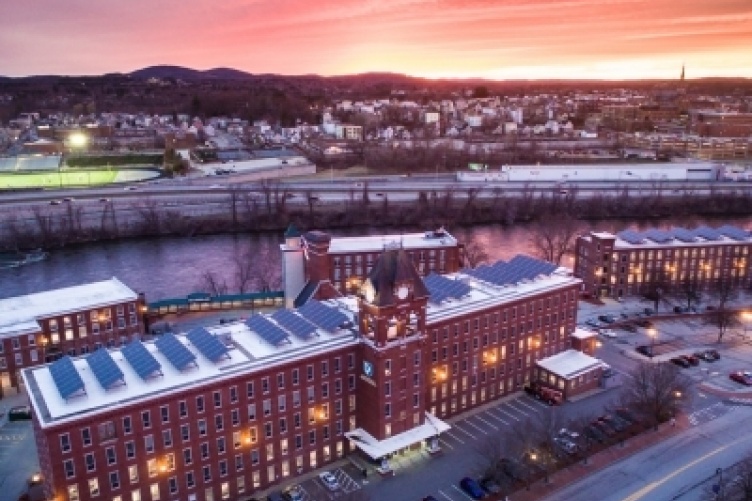
UNH Manchester has made Pandora Mill building its home since 2015, and many wonder how the Pandora building got its nickname. The building, as well as the mills themselves, have a history that goes back several centuries, each one leaving its mark. Built in 1850 by the Manchester Print Works and the Amoskeag Manufacturing Company, it was primarily responsible for dressing fabrics, spinning, and carding. It also had a picking house, still attached today, where workers would clean and sort raw wool.
While the building has had some renovations since its establishment, the main feature of the building is its tower. It was rebuilt in 1879 into the one we see today. The building was renovated in 2012 by the current owners, 1850 Associates, into a “state-of-the-art ‘green’ building”, as the Manchester Historic Association stated in their history of the Pandora mill. It is equipped with carpet made from recycled soda bottles, efficient heating and cooling systems, a rain water collection and reuse system, and the well-known roof top solar panels. Many companies have acquired the building since it was built, however the company who gave the building its nick name was Pandora Industries.
In 1950, Pandora Industries bought the building and continued using it until 1990. Pandora Industries, a well-known knitwear manufacturer, was known for their sweaters; the building had a sign on its roof at one point in time which read, “Home of Pandora Sweaters." At the height of the company, the mill produced over 60,000 sweaters a week and employed about 1,000 people. May Gruber, one of the founders of Pandora Industries alongside her parents and husband, was a woman who paved the way for other women in big business. Gruber and her associates began the company in New York and later moved it to Manchester, New Hampshire.
During a time when not many women were seen running businesses, she took control of the company in 1964 upon the death of her husband, and business partner, Saul Sidore, running it until she sold it in 1983. Both a business icon and civic leader, Gruber gave much of her time to the arts and music around the state, as well as donating to organizations that promoted health and wellness of children. Born March 6, 1912, and a graduate from New York University in 1931, Gruber was the subject of a documentary, “Sweater Queen: May Gruber and the Rise of Pandora Industries”, a retelling of the inspirational story of her rise into the business world. It recalls her first job in sales all the way to her hand in the growth of the multimillion-dollar company. Passing away just shy of her 101st birthday in 2013, Gruber left behind a legacy of strong leadership and an active philanthropic ideal.
Like the building's past inhabitants, UNH Manchester will leave its mark.
“Beginning with the Amoskeag Manufacturing Company, Manchester’s Millyard has had a long history as a center for industry and innovation”, said Jeffery Barraclough, acting director of the Manchester Historical Association. “It is exciting to see this history continue as UNH Manchester expands and moves into the historic Pandora Mill building."
We, as a school, aim to continue to build upon the deep rooted history of the mills, as well as our own. Like the newly renovated mill itself and the people who pioneered for others, the combination of the old and new will meet and hopefully inspire our students to be creative, and reach for goals that sometimes seem impossible.
Several companies now call the millyard their home, but with a combined effort, UNH Manchester can continue to help the millyard and the surrounding Manchester area, grow into something that will leave a mark on a global scale.
-
Written By:
Kristin Boelzner '16 | UNH Manchester Student Perspectives blog


















